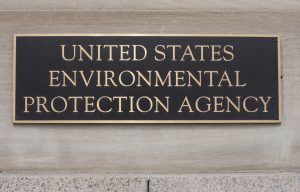Recently the Eleventh Circuit spent a lot of ink discussing how the marketing and sale of sashimi-grade tuna is affected when myoglobin  reacts with oxygen to produce oxymyoglobin, and with carbon monoxide to form carboxymyoglobin before oxidizing into metmyoglobin—or, in other words, how quickly raw tuna meat turns from bright red (good) to brown (not so good). In the end, the court held, it doesn’t really matter—at least as to insurance coverage for advertising injury—unless the insurance company is given proper notice. And not just notice of a claim, but notice of the specific claim for which coverage is requested.
reacts with oxygen to produce oxymyoglobin, and with carbon monoxide to form carboxymyoglobin before oxidizing into metmyoglobin—or, in other words, how quickly raw tuna meat turns from bright red (good) to brown (not so good). In the end, the court held, it doesn’t really matter—at least as to insurance coverage for advertising injury—unless the insurance company is given proper notice. And not just notice of a claim, but notice of the specific claim for which coverage is requested.
Articles Tagged with Oregon
A “Suit” by Any Other Name: Ninth Circuit Rules CERCLA 104(e) Letter Triggers Duty to Defend
Recently, we wrote about the breadth of the “duty to defend,” and its importance to policyholders. As if on cue, late last week the Ninth Circuit Court of Appeals confirmed in Ash Grove Cement Company v. Liberty Mutual Insurance Company that, under Oregon law, an insurer’s duty to defend begins with an information request from the Environmental Protection Agency, and continues for the duration of the regulatory process.  The particular information request at issue in Ash Grove Cement is known as a “104(e) letter,” which is issued by the EPA under section 104(e) of the Comprehensive Environmental Response, Compensation and Liability Act of 1980 (CERCLA). As companies that have owned or operated a contaminated site know from experience, a 104(e) letter or a similar request under state environmental law typically is the first step in a regulatory enforcement process under which they face strict and retroactive liability for the costs of investigating and cleaning up the site. The ruling in Ash Grove Cement means that defense cost coverage begins at this critical juncture and continues until site investigation and cleanup is completed.
The particular information request at issue in Ash Grove Cement is known as a “104(e) letter,” which is issued by the EPA under section 104(e) of the Comprehensive Environmental Response, Compensation and Liability Act of 1980 (CERCLA). As companies that have owned or operated a contaminated site know from experience, a 104(e) letter or a similar request under state environmental law typically is the first step in a regulatory enforcement process under which they face strict and retroactive liability for the costs of investigating and cleaning up the site. The ruling in Ash Grove Cement means that defense cost coverage begins at this critical juncture and continues until site investigation and cleanup is completed.
 Policyholder Pulse
Policyholder Pulse


